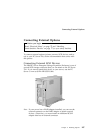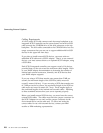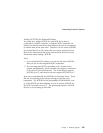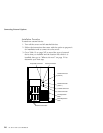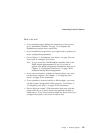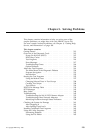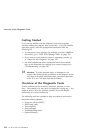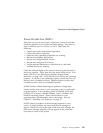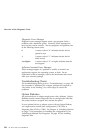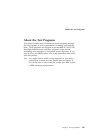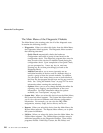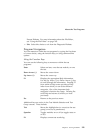Overview of the Diagnostic Tools
Power-On Self-Test (POST)
Each time you turn on the system, it performs a series of tests that
check the operation of the system and some options. This series of
tests is called the power-on self-test, or POST. POST does the
following:
Checks some basic system-board operations
Checks the memory operation
Starts the video operation peripherals are working
Detects and initializes ISA devices
Detects and configures EISA devices
Detects and configures PCI devices
Verifies that the diskette drive, hard disk drive, and other
installed devices are working
Check the indicator lights on the front of the server and the back of
the power supplies. Verify that all of the amber LEDs are off. If an
amber LED is on, see “Identifying Problems through Status
Indicators” on page 258. Verify that all server devices are operating
properly. If a device is not operating properly, ensure that it is not
defective and is installed correctly. Replace defective devices and
reinstall any device that is not installed correctly.
If POST finishes without detecting any problems, a single beep
sounds and the first screen of your operating system or application
program appears. If no operating system is installed, the system
prompts you to insert a startable diskette. Insert a diskette, and
install an operating system. Follow the directions in your
operating-system documentation and on the screen. Also see
Chapter 2, “Installing Your Software” on page 27.
If POST detects a problem, an error message appears on your
screen. A single problem can cause several error messages to
appear. When you correct the cause of the first error message, the
other error messages probably will not appear on the screen the
next time you turn on the system.
Chapter 5. Solving Problems 215



